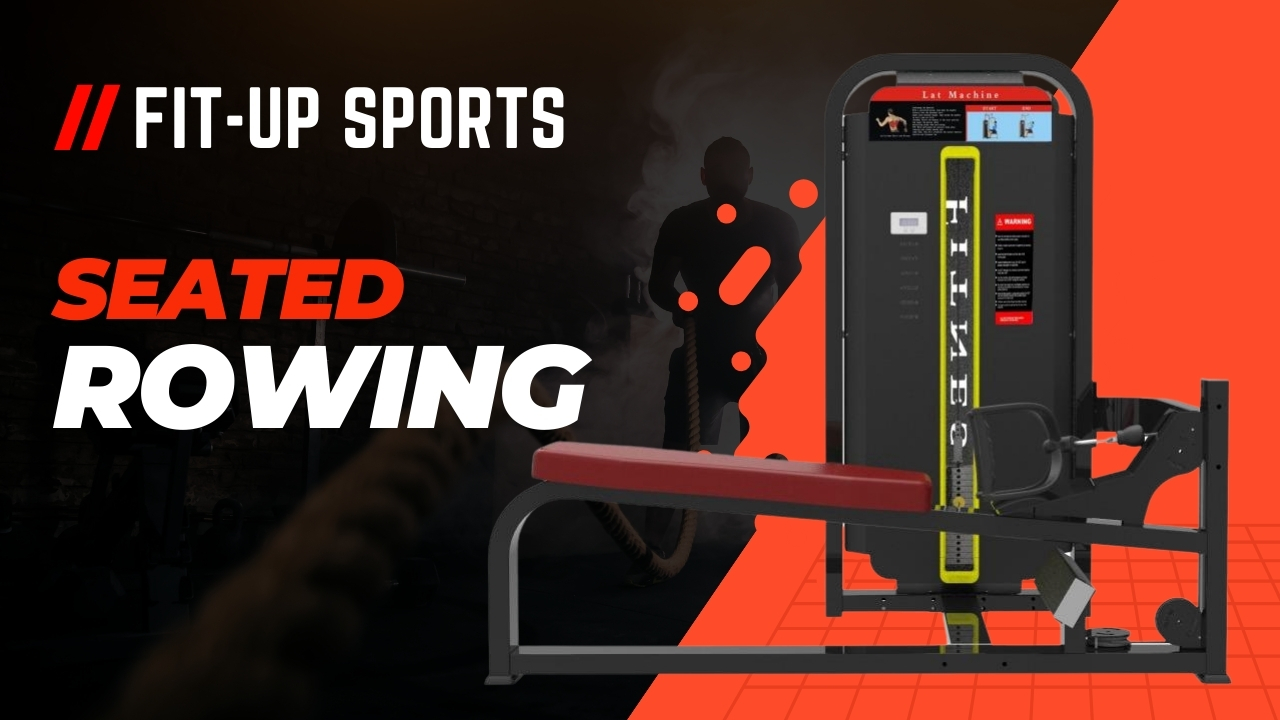
SEATED ROWING
The seated rowing machine is a versatile piece of gym equipment designed to target and strengthen the muscles of the back, particularly the latissimus dorsi (lats), rhomboids, and trapezius. It is a popular choice for individuals looking to build upper body strength, improve posture, and enhance overall muscular endurance.
Here's an overview of the seated rowing machine and its features:
-
Design and Construction: The seated rowing machine typically consists of a padded seat, a handle or bar attached to a cable or chain, and a resistance system that provides adjustable resistance for the exercise. Some seated rowing machines may have additional features such as footplates, adjustable seat height, or chest pads for added stability and support.
-
Execution: To perform the seated rowing exercise, the user begins by adjusting the machine to their desired settings, including seat height and resistance level. They then sit on the seat with their feet positioned on the footplates or against the footrests, knees slightly bent, and grasp the handle or bar with an overhand grip. With their back straight and core engaged, they then pull the handle towards their torso, squeezing the shoulder blades together and engaging the muscles of the back. The movement ends when the handle reaches the chest or upper abdomen. The user then slowly returns the handle to the starting position, maintaining control throughout the movement.
-
Muscle Engagement: The primary muscles targeted during the seated rowing exercise are the latissimus dorsi, which are the large muscles of the back responsible for adduction, extension, and internal rotation of the shoulder joint. Additionally, the rhomboids, trapezius, rear deltoids, and biceps are also engaged as synergistic muscles during the movement. The seated rowing machine provides a compound movement pattern that effectively works multiple muscle groups simultaneously, making it an efficient exercise for building upper body strength and muscular endurance.
-
Adjustability: Seated rowing machines often offer adjustable features to accommodate users of different sizes and preferences. This may include an adjustable seat height, allowing users to customize the machine to their desired position for optimal comfort and performance during the exercise. Some machines may also offer adjustable resistance settings, allowing users to increase or decrease the weight as needed to challenge their muscles.
-
Safety and Stability: The seated rowing machine provides stability and support for the user during the exercise, reducing the risk of injury. The padded seat and backrest help stabilize the body, while the footplates or footrests keep the feet secure and grounded during the movement. Additionally, the guided movement pattern of the machine helps users maintain proper form and technique, minimizing the risk of strain or overextension.
-
Variations: While the seated rowing primarily targets the muscles of the back, variations of the exercise can be performed to target different areas of the upper body. This may include narrow grip rows to emphasize the muscles of the middle back, wide grip rows to target the lats, or single-arm rows to challenge stability and balance.
In summary, the seated rowing machine is a valuable piece of equipment for targeting and strengthening the muscles of the back and upper body. With its adjustable features, guided movement pattern, and compound muscle engagement, it provides a safe and effective way to build upper body strength, improve posture, and enhance overall muscular endurance.

